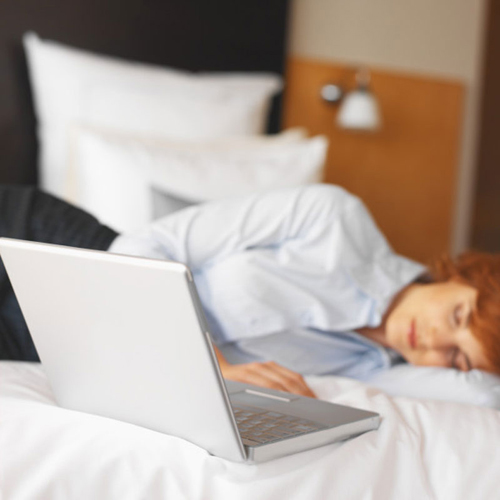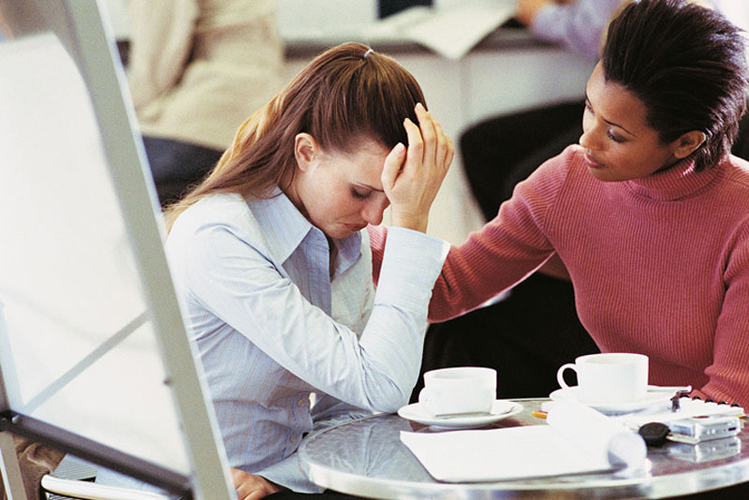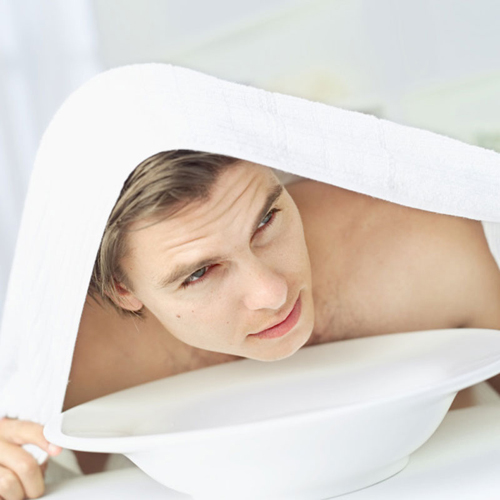| Q: |
What is SAD?
| | A: |
SAD, or seasonal affective disorder, is a recurrent disturbance
of mood occurring in winter or when light levels are naturally low. We
all feel better when the sun is shining. On days that are gloomy,
overcast, or rainy, we tend to feel less enthusiastic about life and
tend to spend more time indoors. We even have a tendency to socialize
less and to do less work. So when winter with its short days and long
dark nights comes along, many of us feel a drop in enthusiasm for life
and for getting out. If the condition is mild (subclinical SAD), it is
referred to as the “winter blues” but when it is more severe and
associated with major depression, then SAD is the appropriate term.
|
| Q: |
How common is SAD?
| | A: |
Approximately 2 in 100 people living in northern Canada, the
northern US, and northern Europe get SAD and it is estimated that about 1
in 10 people suffer from subclinical SAD (“winter blues”). People who
have grown up in tropical countries or have lived there for long periods
of time may also be more susceptible to developing SAD once they move
to a country that has a winter with low levels of light. SAD is very
rare in people who live within 30 degrees north and south of the
equator, because days and nights in winter and summer are almost always
equivalent in length and the natural light levels are consistently
strong and bright.
|
| Q: |
Who gets SAD?
| | A: |
SAD can begin at any age but generally develops between the ages
of 18 and 30 years. It can sometimes be triggered by major life events,
such as childbirth, a serious illness, or bereavement. SAD appears to be
twice as common in women as in men, but this may be misleading since
men are often less likely to want to admit to feelings of depression,
anxiety, or an inability to cope with life.
|
| Q: |
What causes SAD?
| | A: |
Recognition of SAD as a distinct syndrome and scientific studies
on its nature, consequences, and treatment have only been undertaken in
the past 20 years. A number of factors lead to SAD but the exact cause
is still unclear. However, it is known that the most important factor is
the level of natural light required to trigger neurochemical and
hormone production in the brain, via the hypothalamus. Brain serotonin
levels are low in people depressed in winter and one factor for the
symptoms of SAD could be inadequate production or effectiveness of
serotonin.
|
| Q: |
Does melatonin play a role in SAD?
| | A: |
Melatonin levels have been found to be high in people with SAD in winter with the levels
normalizing in spring and summer. However, suppression of melatonin
using bright light therapy doesn’t cure all symptoms of SAD because it
is only one potential mechanism leading to this disorder. Another theory
used to explain some of the symptoms of SAD and its seasonality
includes subtle changes or disruptions in the way the body clock works. A
slowing down of the circadian rhythms may result from changes along any
of the neural pathways from the suprachiasmatic nucleus to the
hypothalamus.
|
| Q: |
When does SAD occur?
| | A: |
In the Northern Hemisphere, SAD occurs between September and
April and is generally most severe in the darkest months from December
to February. A diagnosis of SAD can be made with confidence if symptoms
occur over consecutive winters.
|
| Q: |
What happens in SAD?
| | A: |
Symptoms of SAD (see Symptoms of seasonal affective disorder)
are seasonal, so unlike a depressive illness it occurs only in winter.
Most people with SAD have a gradual resolution of their symptoms as the
days get longer in spring; some even have a short burst of mania and
hyperactivity once spring arrives. But all the symptoms should
disappear. In subclinical SAD, depression or anxiety are absent or mild.
In the Northern Hemisphere, most people with subclinical SAD have their
worst phases in the darkest months from December to February. Fatigue
and eating or sleeping problems are typical of “winter blues” and
symptoms last a shorter time.
|
| Q: |
How is SAD treated?
| | A: |
The most common and effective treatment for SAD is light therapy. Psychotherapy, counseling, and cognitive-behavioral therapy can all be useful adjuncts to the treatment of SAD.
|
| Q: |
Can antidepressant medication help in the treatment of SAD?
| | A: |
If SAD is severe, medications to increase brain serotonin levels can help, and can be combined with light treatment
if necessary. Paroxetine, fluoxetine, and sertraline are examples of
medications that improve serotonin balance and can be prescribed by your
doctor. These medications usually take a few weeks to be effective.
|
| Q: |
Are there any permanent cures for SAD?
| | A: |
Relocating to a country close to the equator is the only known
“cure.” A winter break to a sunnier region or even skiing (bright light
reflected off the snow) can be therapeutic. However, if you then return
to darkness, your symptoms of SAD will recur.
|
| Q: |
What can my family and friends do to help me cope with SAD?
| | A: |
Information and understanding are important to make living
together easier. A supportive family member, friend, or partner can
encourage you to stick to therapy and make helpful lifestyle changes
(see What else can I do to help prevent SAD?). Self-help groups and websites provide support and information, too .
|
Symptoms of seasonal affective disorder
Symptoms of SAD are
present during winter months when natural light levels are low and
disappear in spring and/or summer. A diagnosis of SAD is made when
symptoms are experienced over 2 or more winters and are not related to
any other causes of depression, low mood, or other metabolic
disturbances or illness.
Sleep problems: oversleeping; difficulty staying awake during the day; early morning waking; disturbed sleep Mood:
depression; anxiety; feelings of low self-esteem and self-worth;
irritability: feeling inappropriately teary; suicidal; unable to cope
with everyday stress; feeling tense Eating: overeating; carbohydrate cravings; weight gain; bulimia (eating large amounts of food and then vomiting) Energy levels: low energy levels; feelings of fatigue and lethargy Social problems: avoiding social contact; irritability and anger Thought processes: difficulty concentrating; memory difficulties Libido: reduced interest in sexual contact or physical closeness Hormonal problems: irregular menstrual periods Substance abuse: increased risk of alcohol or recreational drug abuse Immune system: increased susceptibility to viral infections



Light therapy
Light therapy
(phototherapy) is one of the most effective treatments of SAD. It is
effective in 4 out of 5 people within 3–5 days after treatment has
commenced. Lightboxes can sometimes be obtained through a specialized
sleep center and there are many companies that market lightboxes that
can be used for SAD. Ask your sleep specialist or doctor for advice.
Exposure
Exposure to light should be
undertaken from 30 minutes to several hours a day. Two hours a day is
generally sufficient and the maximum recommended is 4. The light is not
ordinary, but extremely bright light that is at least 20 times the
intensity of ordinary domestic lighting. Occasionally, lightbox use can
lead to headaches, irritability, or nausea. If this occurs, try to
lessen exposure time. If problems persist, seek medical advice.
Treatment
Light treatment should
start in the fall or when symptoms usually appear and continue on a
daily basis until spring. The therapy comprises sitting near to or in
front of a lightbox (about 2–3ft away) and allowing the light to shine
on the eyes. Any device that blocks the passage of light to the retina,
such as tinted lenses, should not be worn. Light therapy should be used
from the early morning and through the day. However, it is best not to
use it at night so that you still retain your natural melatonin
secretion and can fall asleep.
Dosage
The minimum dose
of light intensity to treat SAD is 10,000 lux, whereas most domestic and
office lighting (especially fluorescent lighting) delivers only 200–500
lux. A special lightbox must be used because some solar/suntan lamps
and lightboxes emit too much UV light, which can be harmful to the eyes.
What else can I do to help prevent SAD?
Try to get
outdoors during the darker winter months, especially in the middle of
the day, although this does not necessarily cure SAD. Try to work next to a window with natural light. Paint your walls white or in pale colors to enhance brightness inside your home. Keep
winter time as stress-free as possible. This can be difficult at
certain times (such as when there are family get-togethers at
Thanksgiving and Christmas); avoid over-commitments. Plan life-changing events, such as a big move or changing jobs, for the summer months if possible. Get
active–exercise is known to improve mood. Activities that get you out
in natural light, such as a lunchtime walk, may be particularly helpful,
but any type of exercise brings benefits. Pamper yourself. Relaxation techniques and pampering therapies (massage, aromatherapy, etc.) can be of help. Keep your diet healthy–try to balance your cravings for carbohydrates with plenty of vegetables and proteins.
|